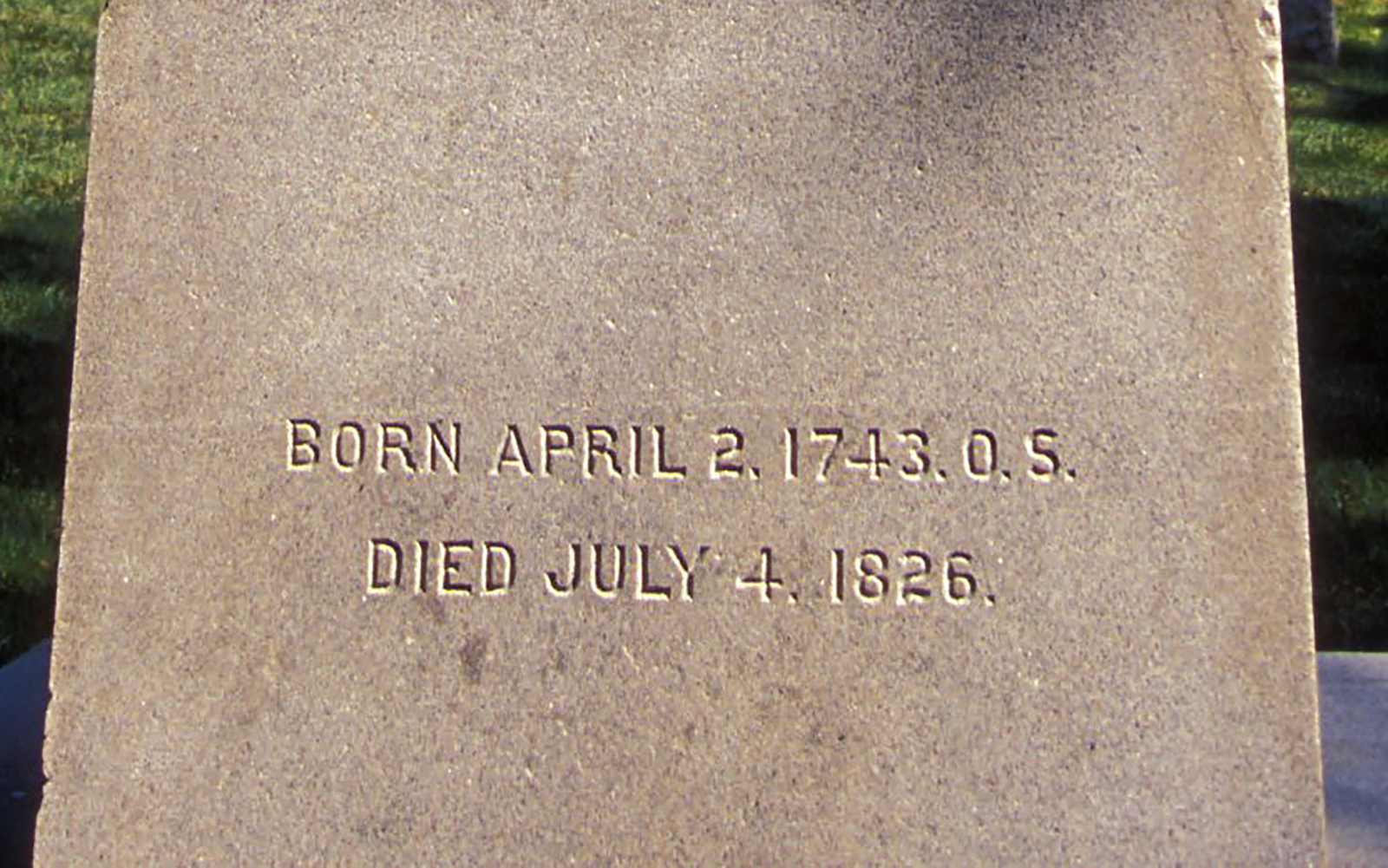Old Style (O.S.)
The letters O.S. appearing after dates (as on Thomas Jefferson's tombstone and his epitaph for his wife, Martha Wayles Skelton Jefferson) stand for "Old Style." The Julian or Old Style calendar was in effect in England and her colonies until 1752, when the Gregorian or New Style calendar was adopted. This added eleven days to the current date to bring the calendar year into step with the astronomical year. Thus, the birthday of Jefferson, who was born on April 2 under the Old Style calendar, is now celebrated on April 13, the New Style date. The Gregorian or New Style calendar is still in use today.
The Julian calendar, adopted under Julius Caesar in 46 B.C., calculated the year as 365 1/4 days. This was eleven minutes and fourteen seconds too long, so that by 1582, the calendar year and the astronomical year were no longer synchronized, and the vernal equinox occurred on March 11. Pope Gregory XIII suppressed ten days to make the equinox fall on March 21. Most Catholic countries immediately adopted the new calendar. England and her colonies did not adopt the Gregorian calendar until September 2, 1752, by which time eleven days had to be deleted.
The reformation caused many citizens to feel cheated of eleven days' pay, and they chanted, "Give us back our eleven days." Ancient British calendar customs were also somewhat unsettled by the revision, and even today Old New Year's and Old May Day are celebrated in some areas. The hawthorn or "may tree," long a fixture of May Day festivities, is now seldom found in bloom on May Day. It blooms around Old May Day, May 12.
Double Year Dates: Some dates before 1752 are expressed in this form: 1648/9. In Britain under the Julian calendar, the legal beginning of the year was Lady Day, March 25. Thus, dates from January 1 to March 25 before 1752 were often given both their Old Style and New Style years.
- Lucia Stanton, 6/1995
Further Sources
- Connecticut State Library. "Calendar Change of 1752."
- Montgomery, Dennis. "A Strange-Disposed Time." Colonial Williamsburg XIX, no. 1 (Autumn 1996): 38-42.
- Smith, Mark M. "Culture, Commerce, and Calendar Reform in Colonial America." The William & Mary Quarterly 55, no. 4 (1998): 557-84.
